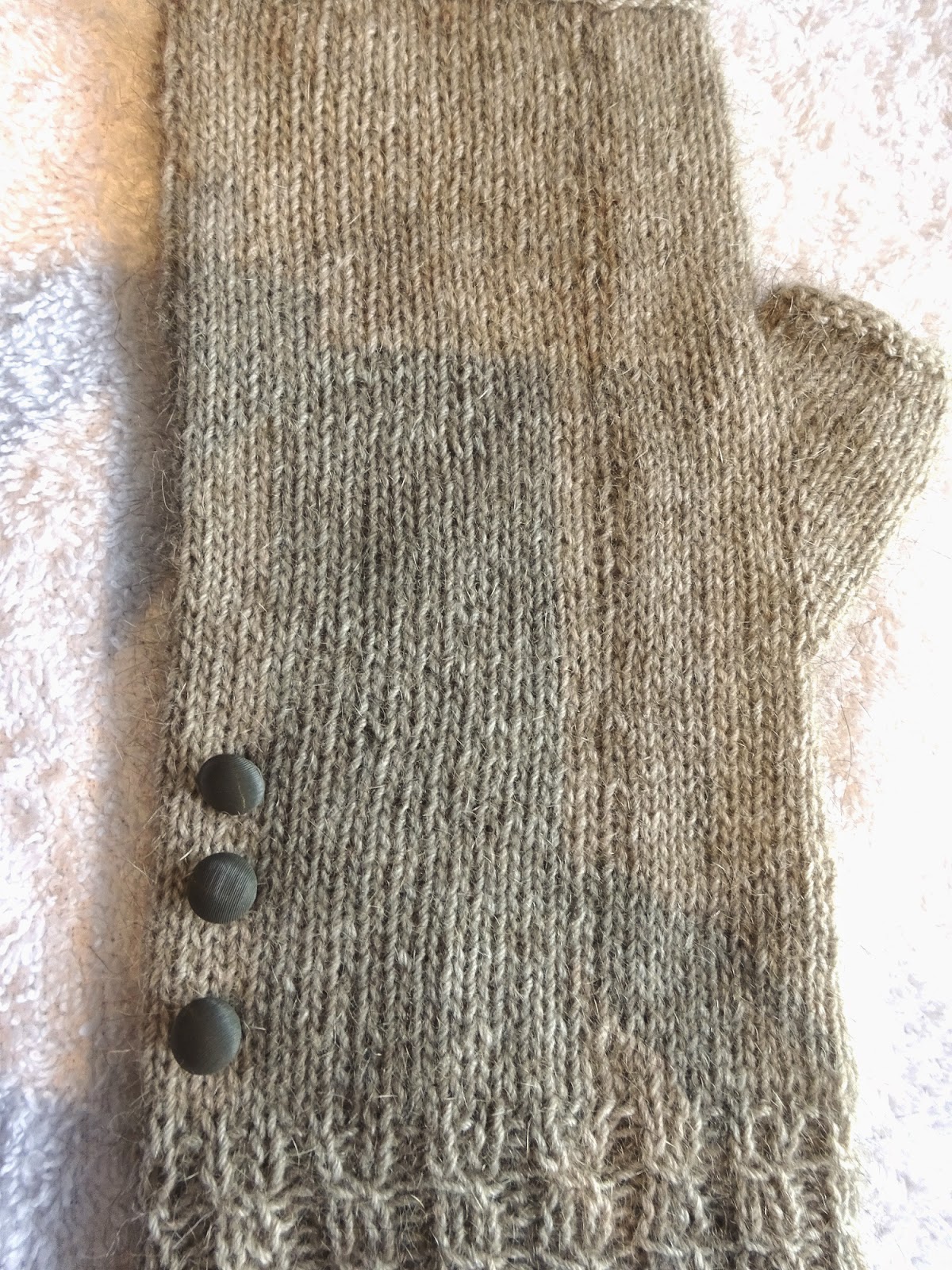My stash of yarn is in better order than it was a few days ago and my office is more organized than it was at the start of this week. Beads are all placed together, and ribbons and wool for felting are living separately so with the yank on one bag all like stocks come out together. Why this flurry of activity? I had to find the antique buttons for the possum yarn fingerless gloves.
Let me start by describing how I got myself in this disorganized situation; all too easily, unfortunately. I have a nasty habit of purchasing knitting accessories that capture my attention without a plan for them. That means beads, ribbons, embroidery thread, as well as buttons are purchased randomly causing these arbitrary purchases to be stored haphazardly in my office and elsewhere. This habit creates chaos with no quick way to locate any of my knitting accessories.
I looked three times in each of the possible locations to no success. Then just as I was about to call off the search for the day, I looked one last time in the place I most expected it to be. And sure enough there were those antique buttons just waiting for me. Buttons -- found!
Then there was the matter of laddering on my first glove. Since I wasn't able to manage the tension between double pointed needles and hoped blocking would fix the problem I moved forward to test that theory. The first glove was soaked and blocked to see what would happen and the results were satisfactory so the second glove was knit.
Below is a side by side of the two gloves, the left, blocked and the right not, and in the middle, 3 gms of yarn left to finish the second thumb. (Indeed, the 25 gms can produce a pair of these gloves, even if one's tension is loose, like mine. This was worrisome until that second glove was far enough along to prove to me there was enough yarn.)
 |
| Blocked vs. Unblocked |
The yarn does tightens up during blocking, but the
bloom is quite remarkable. Below I have tried to show you the difference. Can you see the wispy bits floating in the air of the blocked glove in the first picture? Note how close to the gloves these bits are located in the second photo of the unblocked glove. What you can't see is the change in the way the fabric feels. To me the blocked glove feels lighter although both gloves weigh 11 gms. It is as if the entire texture of the fabric is completely transformed during blocking, and of course it is.
 |
| Blocked |
 |
| Unblocked |
And here is the blocked glove with the buttons plopped on it for a quick photo. They will actually be on the side of wrist but I placed them on top so you could see them. Hopefully, I space the buttons better when they are actually sewn in place.
 |
| Glove and buttons together at last |
Buttons found; laddering minimized; solutions found. Yes, it is another good day.




Comments
Post a Comment